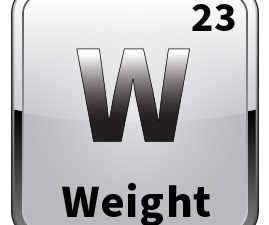I have mentioned elements may have many uses. Calcium, symbolized by Ca, does not disappoint. There is no need to mention the obvious uses, but one of the hidden uses many are not aware of is that Ca helps muscle movement by transferring messages from the brain throughout the body. In the Periodic Table of TOPS, Ca symbolizes Camouflage and I suspect…
Search Results for: life path
The Periodic Table of TOPS: Kr is for Kryptonite
In nature, a noble gas called Krypton has the symbol Kr. Krypton is named after the Greek word kryptos meaning “cryptic.” There are times in my refracted life when what I need is right in front of me. It was not hidden, it’s just I refused at some level to acknowledge the obvious. On a Li Fe PaTh journey, there…
The Periodic Table of TOPS: U is for You, Ac is for Accountable
The next element introduced into the Periodic Table of TOPS is U which marks the official halfway point of this project. In nature, U symbolizes Uranium which is used to generate power. In TOPS, U symbolizes You, and it really is fitting since You (U) have all the power. We have all heard it before…only You (U) can do it, nobody…
The Periodic Table of TOPS: Bi As is for Bias
In previous posts I have refracted on how various elements effect my Li Fe Pa Th. The struggles are real, and it is important to note that the 23 elements already discussed (with more to come) are needed to assist in defeating the next element being introduced… BiAs, particularly the BiAs that exists against people who battle the dreaded disease…
The Periodic Table of TOPS: W is for Weight
The timing of this next element of the Periodic Table of TOPS happens to land on the day after Thanksgiving. Upon further refraction, there really is not a great day to discuss this heavy subject. The next element is W which in TOPS symbolizes Weight. In nature, W symbolizes tungsten which is also called wolfram. It is used to increase…
The Periodic Table of TOPS: Re is for Retreat
There was a time when all pictures were taken with a camera, and phones were only used to call someone. I am also old enough to remember the camera that had a flash bulb, that was only used once. The element Re, which symbolizes Rhenium, was used to ignite a lighter to initiate the flash. In the Periodic Table of…
The Periodic Table of TOPS: Mo is for Momentum
There are times when things may come to a stop. In order to get them moving again, a catalyst may need to be introduced. This happens with chemical reactions. The element, Molybdenum (Mo) occurs in nature and serves a cofactor of enzymes used in the metabolism of fats and carbohydrates. In the Periodic Table of TOPS, Mo symbolizes Momentum. Momentum…






